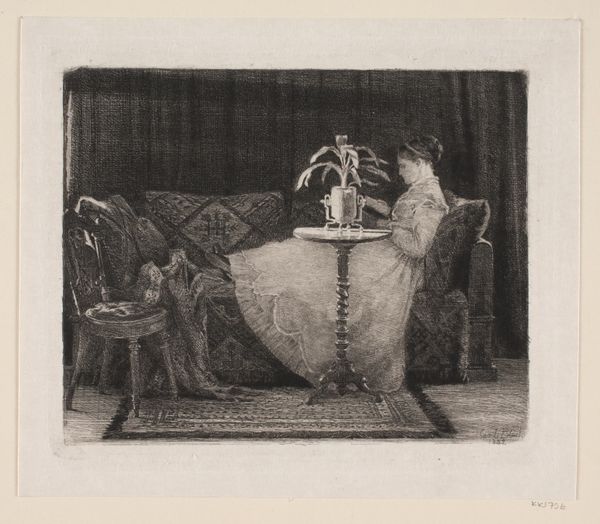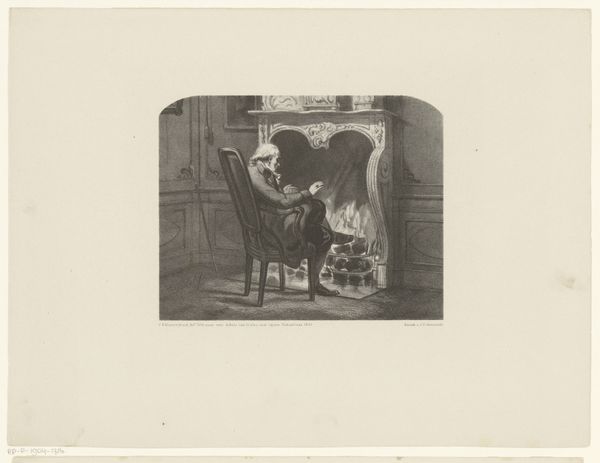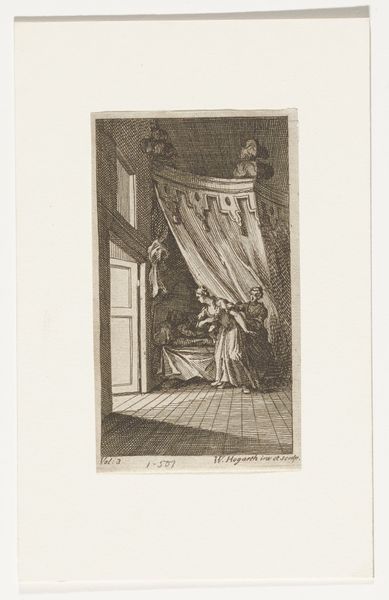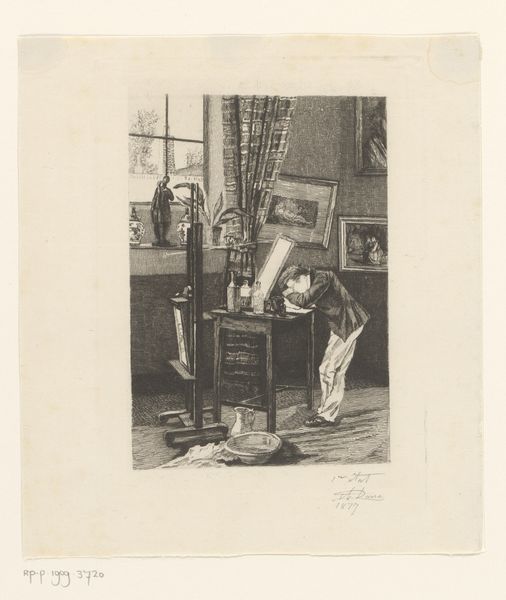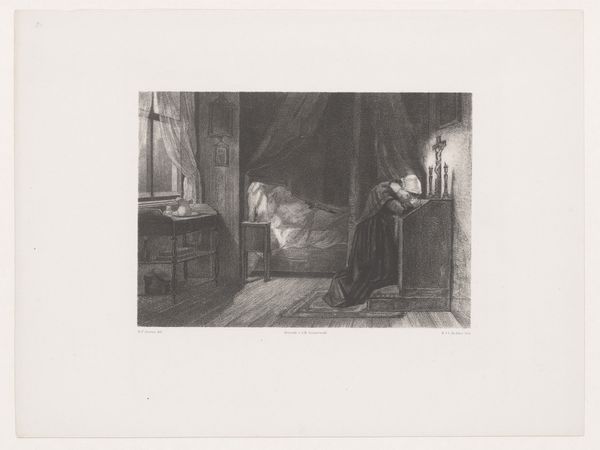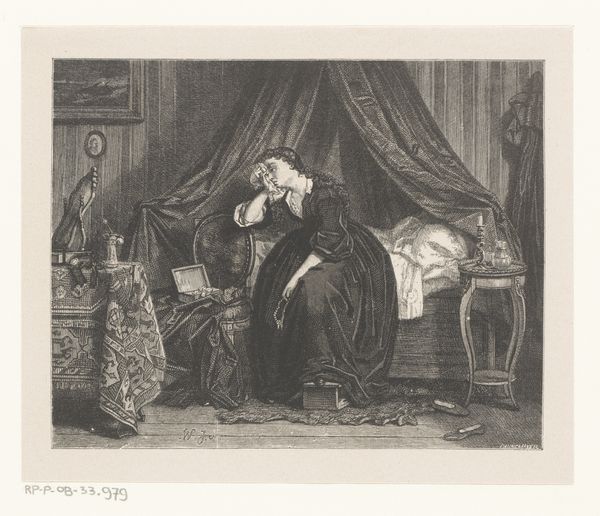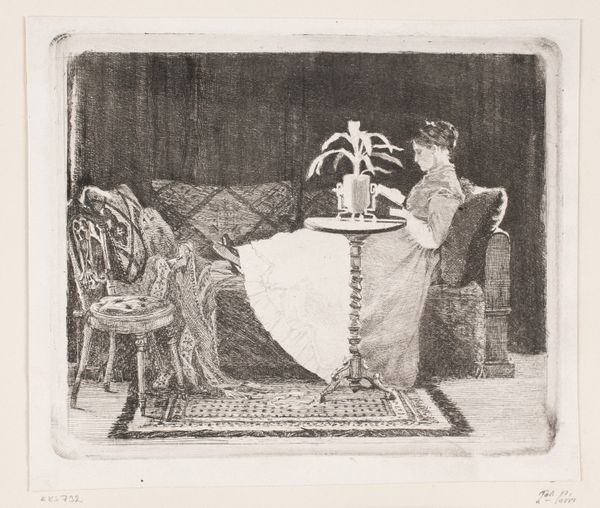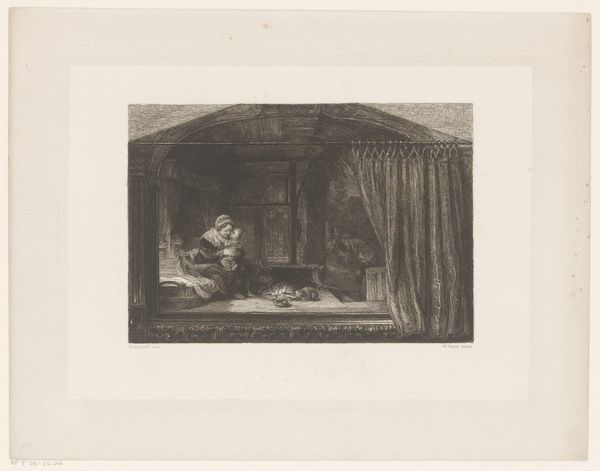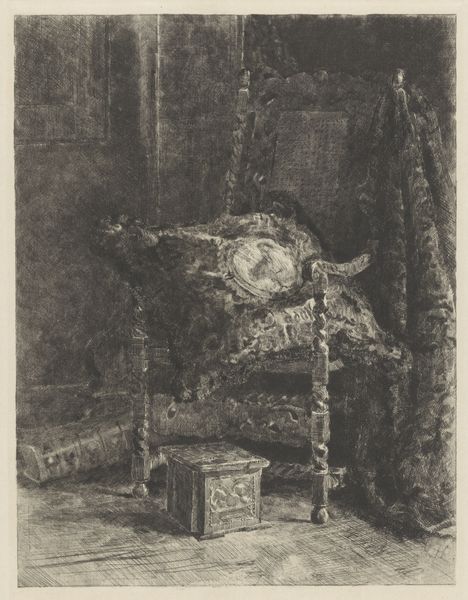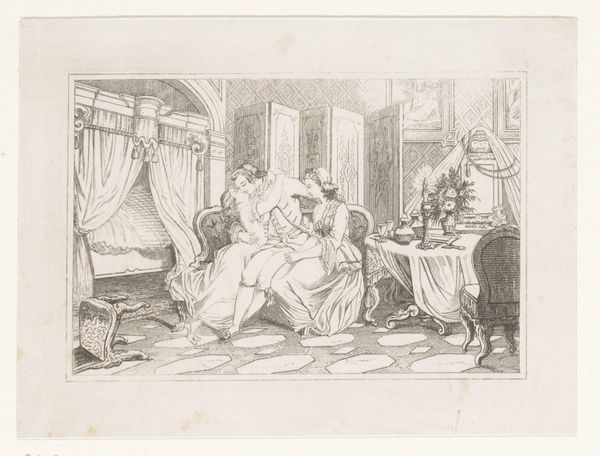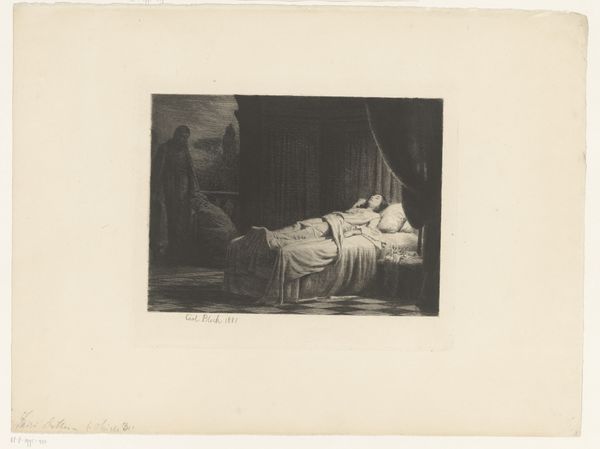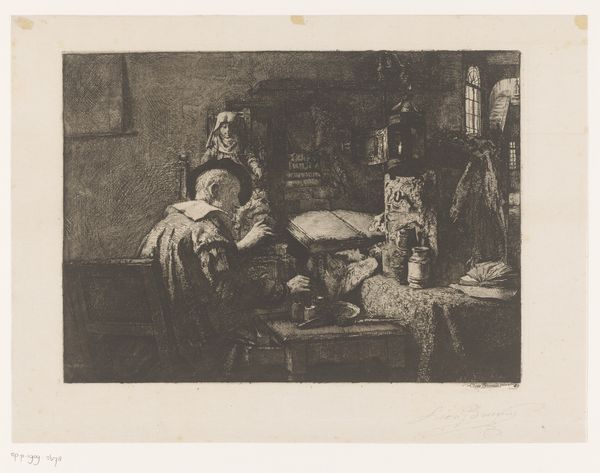
Dimensions: 129 mm (height) x 160 mm (width) (plademaal)
Curator: There’s a quietude about this image that just pulls me in. The soft grey tones, the woman lost in her book... it feels so intimate, almost like eavesdropping on a private moment. Editor: Precisely, and this sense of intimacy reflects the values attached to women of the bourgeois in the 19th century. Carl Bloch completed this etching titled "Læsende dame", or "Lady Reading," in 1882. Curator: Bloch, huh? That explains the detail. He’s got that almost photographic realism going on. Tell me more. What's happening here in terms of her social context? Editor: Well, we can see how women were often depicted in domestic scenes, reinforcing their roles within the household. This is what Virginia Woolf explored in “A Room of One's Own." Notice the arrangement of the drawing? It's quite calculated in establishing the perfect interior, reflecting how middle-class identity gets forged within an interior space, as analyzed by postcolonial theorist Homi K. Bhabha. Curator: Absolutely. But is it just about enforcing roles, or could it be celebrating them? Maybe she’s not trapped; maybe she’s finding freedom in the quiet moments. The fact that she's reading suggests an intellect that transcends just housework. Editor: That’s an interesting perspective, however it depends on how we unpack the purpose of the image as it pertains to women and readership, because it does echo anxieties about intellectual authority. Remember, who produces these images is very telling! What meaning does "domestic bliss" produce? Who is it intended for, and how are we consuming it? Curator: I see your point. Still, there’s something about the way the light catches her face. The dark and grey shading has given it that softness and gives that inner glow, as if the story she is reading is setting her heart alight. Editor: Definitely. The use of etching creates a textured surface, enhancing the tactile feel of the composition as it captures the subdued tone in a monochromatic scheme. Curator: I just want to climb into that scene with her! What do you think—would she lend me her book? Editor: Perhaps, but hopefully you will ask yourself why her space, but not other women’s spaces, are deemed "acceptable" to be represented at the time?
Comments
No comments
Be the first to comment and join the conversation on the ultimate creative platform.

